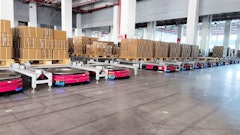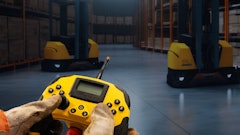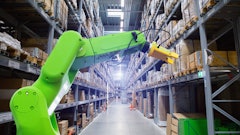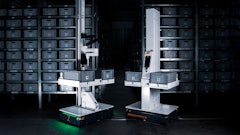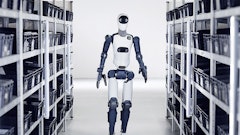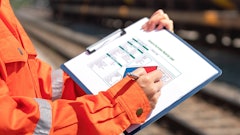
Warehouse automation is having a major impact on the logistics industry and the challenge in delivering successful solutions requires a careful blend of strategic planning and operational innovation. The key is utilizing the ingredients successfully and finding the right formula that will work.
No two warehouses are alike and no two processes are the same, says Pete Guzior, VP, sales for Trew during the presentation “The ‘Secret Sauce’ of Warehouse Automation and the 12 Key Ingredients That Will Have You Earning a 5-Star Rating” at ProMat 2025 in Chicago. While many of the ingredients are the same, it will always be different.
“We all have different operational challenges as well as different labor, facility and business cases,” he says.
The 12 ingredients are:
1. Strategy
2. Infrastructure
3. Operations
4. The human factor
5. Order makeup
6. Order velocity
7. SKUs
8. Inventory
9. Inbound and outbound flow
10. Material flow
11. Variability
12. Operational performance.
Guzior says there are different levers companies can pull depending on capacity and throughput to improve operational effectiveness, productivity and utilization.
Putting the ingredients together
Luther Webb, VP, data science for Trew, says the strategy and infrastructure steps, which work hand in hand, are about, more than anything, understanding what the customer’s business model and developing the strategy to deliver the best ROI while getting the best result for the customer.
With infrastructure, it’s about understanding what kind of facility you have and getting a complete assessment on the existing assets and developing the right IT architecture to develop a secure facility from potential cyberattacks.
With operations and the human element, Webb says it’s important to understand the people working in the facility and being honest about their performance and their ability. Not everyone is capable of being 100% in performance.
“If they’re an 80 or 75% performance level and you put automation in front of them, they’re still going to be that,” Webb says.
It’s critical, he adds, to understand the operational structure and how everything works on a higher level as well as understand how the people fit into the model so companies can get the most out of their workers.
On a more granular level with order makeup and velocity, Webb says companies should be looking at their order drop time, how many units are in each line and whether they’re getting better performance from single or multi units. They also should know how many orders they’re producing, what trends they have and what happens when there are aberrations in the system.
With SKUs and inventory, Webb says, “For customers, if they can improve on their datasets, this would be one of the most key areas.”
It’s more than knowing what is or isn’t in a particular area, he adds. It’s also about ensuring the SKUs being used are, in fact, getting regular use. If they’re gathering dust because they’re only being used once or twice a year, that isn’t indicative of being useful, Webb says. The same is also true of inbound and outbound activity. Webb says it’s about understanding the activity and flow on the inbound side and developing on the outbound side, ensuring deliveries are being made and service levels are being kept.
Keeping operations consistent
Sustainable material flow, Webb says, is about understanding how flow gets generated, processed and consumed. “If you don’t have an upstream process that can keep pace, the downstream process is gonna lag.”
He adds that when evaluating systems and designs, the flow is the key. There will be fluctuation and work processes will sway, but it can be leveled by taking as much of the variation out as possible. The origin, travel, cycle time, queueing, transactional change and throughput will never be the same, but consistency is possible and can be maintained by keeping variability and performance as constant and consistent as possible.

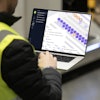

![Pros To Know 2026 [color]](https://img.sdcexec.com/mindful/acbm/workspaces/default/uploads/2025/08/prostoknow-2026-color.mduFvhpgMk.png?auto=format%2Ccompress&bg=fff&fill-color=fff&fit=fill&h=100&q=70&w=100)
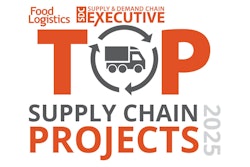
![Pros To Know 2025 [color]](https://img.sdcexec.com/files/base/acbm/scn/image/2025/01/Pros_To_Know_2025__color_.67856cb23da64.png?auto=format%2Ccompress&fit=crop&h=167&q=70&w=250)
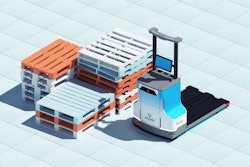


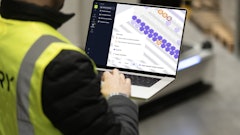
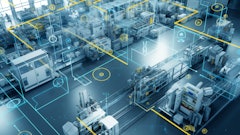
![Pros To Know 2026 [color]](https://img.sdcexec.com/mindful/acbm/workspaces/default/uploads/2025/08/prostoknow-2026-color.mduFvhpgMk.png?ar=16%3A9&auto=format%2Ccompress&bg=fff&fill-color=fff&fit=fill&h=135&q=70&w=240)
